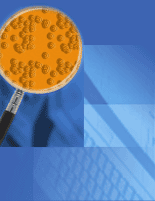File Viruses
File infectors, also
known as parasitic viruses, operate in memory and usually infect
executable files with the following extensions: *.COM, *.EXE,
*.DRV, *.DLL, *.BIN, *.OVL, *.SYS. They activate every time the
infected file is executed by copying themselves into other executable
files and can remain in memory long after the virus has activated.
Thousands of different file infecting viruses exist, but similar
to boot sector viruses, the vast majority operate in a DOS 16-bit
environment. Some, however, have successfully infected the Microsoft
Windows, IBM OS/2, and Apple Macintosh environments.
Multipartite
Viruses
Multipartite viruses
have characteristics of both boot sector viruses and file infecting
viruses.
Macro
Viruses
Macro viruses currently
account for about 80 percent of all viruses, according to the
International Computer Security Association, and are the fastest
spreading viruses in computer history. Unlike other virus types,
macro viruses aren't specific to an operating system and spread
with ease via email attachments, floppy disks, Web downloads,
file transfers, and cooperative applications.
Macro viruses are, however, application-specific. They infect
macro utilities that accompany such applications as Microsoft
Word and Excel, which means a Word macro virus cannot infect an
Excel document and vice versa. Instead, macro viruses travel between
data files in the application and can eventually infect hundreds
of files if left to spread.
Macro viruses are written in "every man's programming language"
- Visual Basic - and are relatively easy to create. They can infect
at different points during a file's use, for example, when it
is opened, saved, closed, or deleted.
Script
Viruses (VBScript, JavaScript, HTML)
Script viruses are written
in script programming languages, such as VBScript (Visual Basic
Script) and JavaScript. Viruses in these two scripts use Microsoft's
Windows Scripting Host (WSH) to activate themselves and infect
other files. Since WSH is available on Windows 98 and Windows
2000, the viruses can be activated simply by double-clicking an
infected *.vbs or *.js file from the Windows Explorer. The "ILOVEYOU"
virus is a famous example of a script virus.
HTML viruses use the scripts within HTML files to do their damage.
These embedded scripts automatically come to life when the HTML
page is viewed from a script-enabled browser.
 |
|
|
Other
Malicious Code
In
addition to viruses, there are other forms of hostile computer
code that can harm your computer. These include Trojan horses
or "trojans", worms, malicious Java applets and ActiveX code.
There are many "joke" programs, which do not replicate or cause
any damage, but can be annoying or else contain inappropriate
content.
Trojans
Trojans are not viruses because they do not replicate,
but they can do just as much damage. A Trojan is a program that
pretends to be something else. The term comes from the classic
Greek story of the Trojan horse. (The Greeks gave a giant horse
to their enemies, the Trojans, supposedly as a peace offering.
After the Trojans brought the horse into their city, Greek soldiers
hidden inside came out and opened the gates for their army.)
In computer terms, an example of a trojan might be a program
that seems like a new game, but actually hides a program to
steal your passwords and email them to another person.
Worms
Worms replicate like viruses. However, instead of
spreading from file to file, they spread from computer to computer,
infecting an entire system.
Worms may rely less (or not at all) upon the user's action to
spread themselves. A computer worm is usually designed to copy
itself from one computer to another leveraging some medium:
email, TCP/IP, etc. Compared to a virus, a worm is designed
to infect as many machines as possible on a network, and less
concerned with spreading many copies of itself on a single computer.
Java
Applets / ActiveX Controls
ActiveX“
controls and Java“
appletsare
basically programs that run within web browsers like Microsoft
Internet Explorerģ. They
add functionality to web sites and make them interactive. Though
these technologies enhance the usefulness of web sites, they
also increase a potential vandalís ability to interfere with
unprotected systems. Because
ActiveX controls and Java applets require that certain
components be downloaded to a userís PC, activating an applet
or control might actually download malicious code.
Joke
Programs
These
programs are the digital equivalent of the old fashioned prank.
These novelty programs are designed for humor at the expense of
another user. They neither infect other programs nor
replicate, and normally do not interfere with computer systems
on their own.
As
with all jokes, the problem with these e-pranks is in how
they are received by their victims. Just as a joke could
unexpectedly provoke a person to violence, joke programs can
cause a computer user, especially a novice one, to act rashly.
Like turning off the computer to stop the joke -- and in the
process, losing all unsaved files in other programs.






